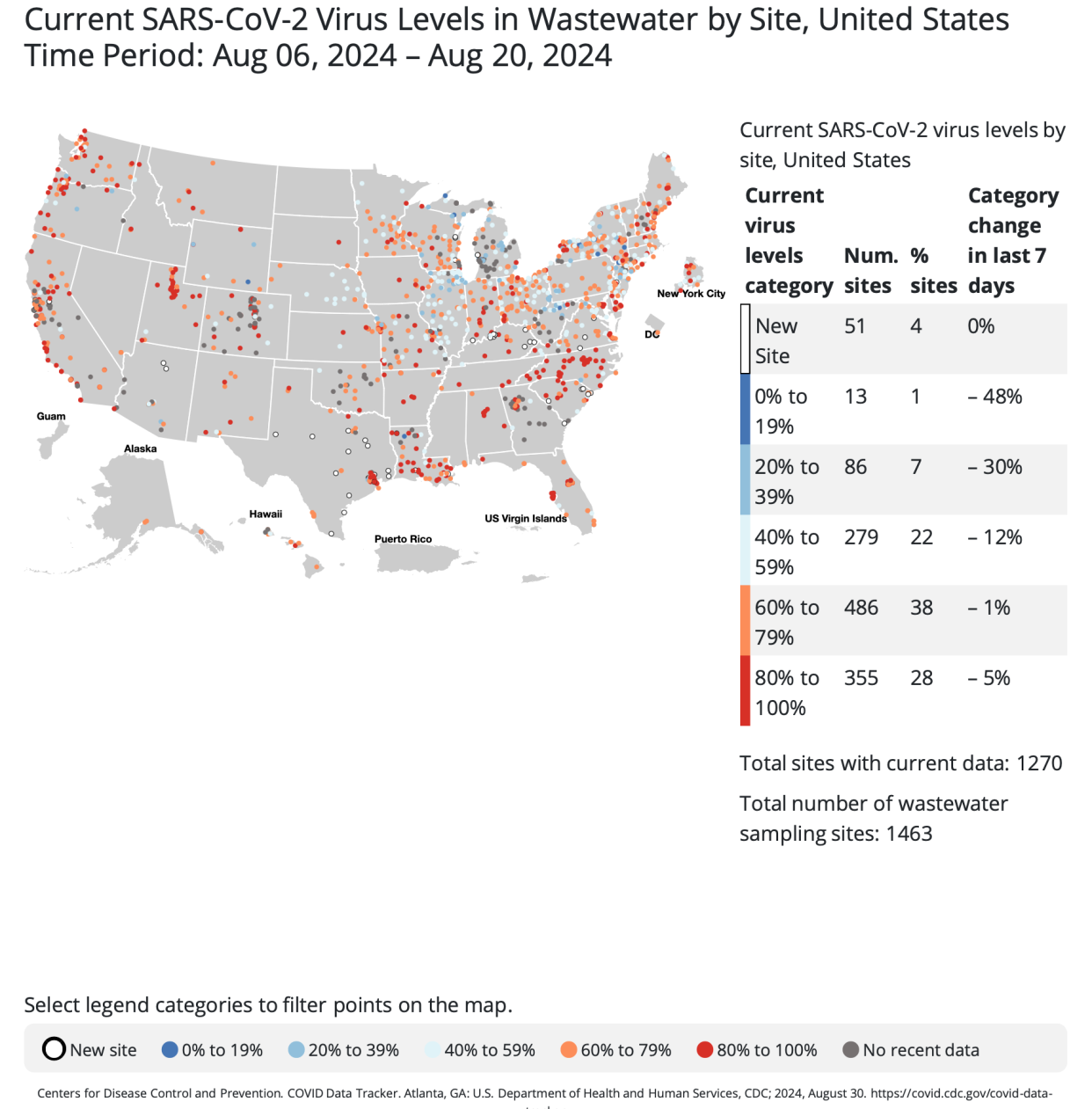COVID-19 cases are increasing in Texas. Here's a map
COVID-19 variants are still present in Texas and throughout the U.S.
According to newly released data from the U.S. Centers for Disease Control and Prevention (CDC), five Southern and Southwestern states—Arkansas, Louisiana, New Mexico, Oklahoma, and Texas—are experiencing the highest infection rates, with nearly 1 in 4 COVID tests returning positive.
Here is how COVID-19 is affecting Texans.
What is the current COVID variant?
According to the CDC, the most recent strain of COVID is SARS-CoV-2, including KP.1, KP.2, KP.3 and their sublineages. They're responsible for the majority of infections in the U.S. as of the first week of August.
See: COVID-19 wastewater map
Recent data from Texas wastewater monitoring shows a significant uptick in SARS-CoV-2 levels, indicating a rise in COVID-19 transmission across the state.
Wastewater surveillance, which tracks viral RNA shed in feces, has become a crucial tool for early detection of community outbreaks.
In several regions, particularly in urban areas like Houston and Dallas, viral loads have increased, aligning with reports of higher COVID-19 case numbers and test positivity rates.
The trend suggests that the virus is circulating more widely, even as traditional testing may not capture the full extent of the spread.
Here is a map of COVID-19 in wastewater thought Texas.

How many COVID-19 vaccines do I need?
The number of COVID-19 vaccine doses needed depends upon several factors, including age, health status, previous vaccination history and the specific recommendations at the time.
For individuals aged 5 and older, only one COVID-19 vaccination per year is currently needed, even if they have not received any previous doses. The CDC has not yet recommended a second dose in the spring for those who are immunocompromised or have underlying health conditions.
For children aged six months to 4 years, a second dose may be necessary to enhance immunity, similar to how children under 8 years old typically receive a second flu shot one month after their first during their initial year of vaccination.
Can I get another vaccine with the COVID-19 vaccine?
Yes, you can receive another vaccine at the same time as your COVID-19 vaccine.
The CDC has stated that it is safe to co-administer the COVID-19 vaccine with other vaccines, such as the flu shot, shingles vaccine, or other routine immunizations. This approach can be especially convenient during the fall when both flu and COVID-19 vaccines may be recommended.
If you are receiving multiple vaccines at once, healthcare providers will typically administer them in different arms to reduce the likelihood of side effects. However, if you have any concerns or specific health conditions, it's always a good idea to consult with your healthcare provider to determine the best vaccination plan for you.
Are flu shots available for the 2024 season?
The latest flu vaccines are now available, and just like the COVID-19 shots, it's recommended to get the flu shot in September or October to ensure full protection by Thanksgiving.
It typically takes about two weeks for vaccines to become effective, so getting them early helps ensure you're protected during the holiday season.
Are the vaccines free?
If you have insurance, most insurance plans will cover them.
It's a good idea to check with your insurance provider beforehand, as some may require you to get certain vaccines at a pharmacy.
For those without insurance, COVID-19 shots at CVS cost $201.99, while the regular flu shot is priced at $68.99. The flu vaccine for those aged 65 and older costs $115.99.
-Nicole Villalpando of The Austin American-Statesman contributed to this report.
This article originally appeared on Austin American-Statesman: Map shows where COVID-19 is surging in Texas
